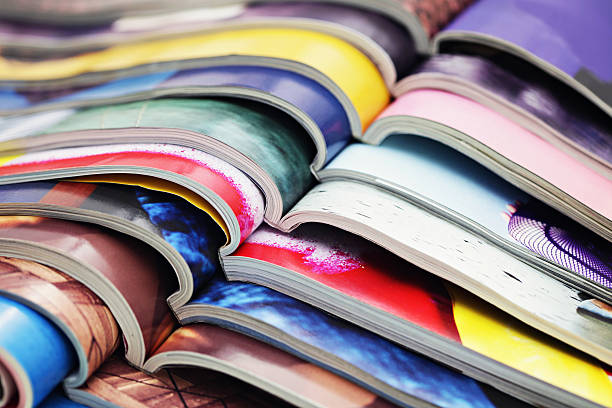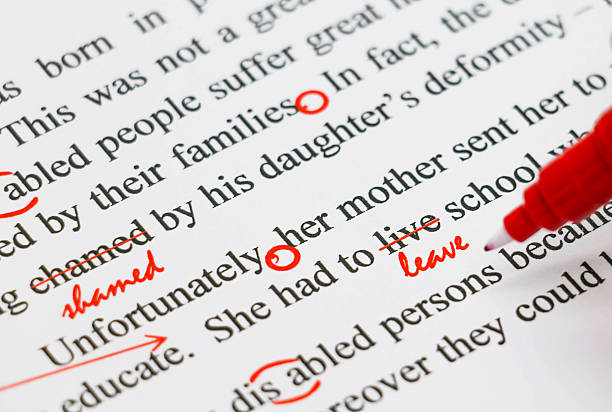
In today’s digital age, we’re surrounded by screens. Yet, the charm of a print magazine is undeniable. So, what’s the secret to making these publications so enchanting? Let’s peek behind the curtain and see the detailed process of bringing a print magazine to life. We’ll showcase the skill and effort that turns a concept into a beautiful, hands-on experience.
At MVP Print, our talented team is driven to make your print magazine dreams real. We know that every detail, from planning the content to the final print, is important. We are excited to share the insider secrets of our craft. This is how we create magazines that truly stand out.
This article is for anyone interested in the magic of print. You might love magazines or just want to know more about their creation. Get ready to see the passion, innovation, and hard work that mark the making of these classic works of art.
Passion, Projections, and Printers
Making a print magazine that stands out requires a true love for creating. The first step is to decide the basics, like how many pages it’ll have and its size. Then, it’s time to plan what goes in it and pick a main topic, or theme.
Creating a Print Magazine: The First Step
Setting a budget is essential early on. This plan decides how often you can publish and helps pick the best printing company. Publishers have to be smart, balancing big dreams with reality to keep their project going strong.
Print Magazine: A Tactile Experience

In today’s world, we’re surrounded by screens and quick fixes. Yet, the charm of a print magazine can’t be beaten. The feeling of a magazine in your hands, flipping through it, engages us deeply. This is something that’s hard to recreate digitally.
MVP Print sees printed pages as more than paper. They’re a canvas for exciting stories and experiences. The paper’s quality, its weight, and the lasting print make for a unique bond. Readers get to actually feel and hold their content, driving a strong connection.
“The tactile experience of a print magazine is irreplaceable. It’s a chance to disconnect from the digital world and truly engage with the content in a way that’s both immersive and lasting.”
Our dedication goes further than just the look and feel of our magazines. We pick the best material to make sure you notice the quality immediately. Whether it’s the smoothness of coated pages or the feel of uncoated ones, everything is chosen to improve your reading experience.
In today’s digital avalanche, a print magazine is a breath of fresh air. It lets us pause, appreciate, and really absorb what’s inside. MVP Print strives to keep this experience alive. We want our readers to continue enjoying the joy of reading printed pages for many years.
Content Planning and Organisation
A print magazine’s success depends on how well it plans its content. At MVP Print, the team works hard to come up with interesting stories. These stories need to match the magazine’s goals and be something readers will enjoy. They look at things like what’s popular now, the season, and what readers like. This helps them make a good mix of stories for each magazine issue.
Developing Story Ideas
Coming up with great story ideas is key. The MVP Print team talks to readers a lot to know what they want to read about. This feedback makes sure the stories in the magazine cover a wide range of topics. It’s all about meeting the readers’ needs and interests.
- Analyse reader feedback and survey data to identify popular topics and areas of interest
- Brainstorm story ideas that align with the magazine’s brand and mission
- Consider seasonal themes and timely news events to keep the content fresh and relevant
- Collaborate with writers, photographers, and designers to bring the story ideas to life
Branding and Mission Statement
Keeping the magazine’s brand and mission clear is important to the MVP Print team. They guide every part of the magazine’s look and content. This includes sticking to a clear identity and purpose.
“Our mission is to inspire and inform our readers, showcasing the best of Australian design, creativity, and innovation. We are committed to delivering a premium print experience that celebrates the tactile nature of the medium.”
MVP Print links each magazine issue closely to the magazine’s brand and goals. This makes sure their magazines speak to their readers and show what makes the publication special.
Editorial Team and Workflow
Every successful print magazine has a strong editorial team at its core. At MVP Print, this team includes both in-house members and valued freelancers. They plan, edit, and design the content, ensuring a rich magazine experience.
In-House Writers and Freelancers
At MVP Print, our editorial team is full of professionals who work closely together. This includes our in-house writers and editors. They come up with stories, do research, and create content that fits our magazine’s goal.
They also work with freelancers. These freelance experts in writing, photography, and design bring their unique skills. Together, they make the magazine shine.
Our way of working at MVP Print is smart and effective. We use different tools and platforms to stay connected. This helps the team and contributors work well together. We can share and edit content easily, thanks to our digital tools.
“Our editorial workflow is a well-oiled machine that allows us to produce consistent, high-quality content for our readers,” says the Editor-in-Chief. “By combining the expertise of our in-house team with the diverse perspectives of our freelance contributors, we’re able to deliver a magazine that truly resonates with our audience.”
The quality of MVP Print magazine’s content shows in every issue. Our team communicates well, manages projects effectively, and aims for the best. This ensures our readers enjoy every page of the magazine.
Print Magazine Design and Layout Process

Creating a print magazine that grabs your attention is no easy task. It involves understanding design, typography, and layout deeply. A crucial part of this process is selecting the right color schemes to ensure the magazine’s content is visually appealing and cohesive. At MVP Print, our designers use InDesign to set the visual tone of the magazine. They experiment with different fonts and grids to find the perfect look.
When it comes to cover design, there are specific requirements to consider. This includes creating a back cover, spine, and front cover design at the correct dimensions and resolutions. Properly designed covers are essential for making a strong first impression and ensuring the magazine stands out on the shelf.
Typography and Grid Systems
Choosing the right fonts is key to the magazine’s look and feel. Our team picks fonts that match the magazine’s style and are easy to read. They also use a consistent grid system. This keeps the layout neat and helps readers follow the content.
- Experiment with a variety of font styles and sizes to create visual hierarchy and enhance readability
- Develop a versatile grid system that allows for flexible content placement and a harmonious balance between text and visuals
- Ensure that the typography and layout choices align with the magazine’s target audience and overall brand identity
Every little detail is important in making a magazine that looks good and reads well. We focus on both creativity and practicality. This way, our magazine doesn’t just look great. It’s also a joy to read, making it stand out from others.
The Content Plan: A Bird’s Eye View
A captivating print magazine starts with a content plan, or flatplan. This tool gives the MVP Print team a full view of each issue. It helps them space out the stories and find spots to improve. They use a digital spreadsheet to keep track of content, page count, deadlines, and make sure the process flows smoothly, from planning to designing.
Making a print magazine like Offscreen is a team effort over 3-4 weeks. This fast pace means the team must be both organized and quick to adapt. They update their content plan regularly to match the changing needs of the magazine.
The content plan is like a map, leading the team through making the magazine. It helps arrange the articles, interviews, and pictures in a way that keeps readers interested. This way, from start to finish, the magazine is a complete experience for the reader.
Using a detailed content plan has really helped the MVP Print team. They plan three months ahead to connect their stories to important dates and trends. This makes their magazine even more engaging and relevant to readers.
The content plan, with its wide view, is a key part of making a successful print magazine. By carefully managing each issue’s details, deadlines, and design, the MVP Print team ensures every issue is high-quality. It shows their love, creativity, and dedication to print journalism.
Print Magazine Proofreading and Final Editing

Making a great print magazine needs a lot of care. At MVP Print, our experts carefully check every part. They look for spelling and grammar mistakes and make sure everything flows well. We aim for the best in every issue.
The last step in making a magazine is proofreading. Our team reads everything closely. They check facts, figures, and make sure the look of the magazine fits its theme perfectly.
- Identifying and correcting typographical errors
- Enhancing the clarity and coherence of the writing
- Maintaining consistency in style, tone, and voice throughout the magazine
- Ensuring adherence to the publication’s brand identity and editorial guidelines
When the magazine reaches readers, they know it’s top-notch. They can trust it’s been looked at with great care. This care increases trust and loyalty among our readers.
Proofreading is the final safeguard against errors that can undermine the credibility and professionalism of a print magazine.
In today’s world, being perfect is key. With so many choices online, readers look for quality. Our hard work in proofreading and final editing makes our magazine a standout. It shows we are an expert in what we do.
Print Ready Files and Pre-Press
Getting the files ready for printing is a big deal. It’s all about making sure everything looks perfect. The team at MVP Print is on it. They check that all the details are right and that the pictures are clear. They work with the printer to get everything set up the right way.
There’s a long list of things to do before a print ad can be finalised. For starters, files need to be the right type for printing. Pictures have to be made smaller for the internet. This is all part of getting things ready before printing.
Before anything is printed, every detail is checked. A final read-through makes sure there are no mistakes. Besides the team working on the project, someone else also looks at the work. This is to catch any errors that might have been missed.
When getting a print ready, checking the colors is very important. Printers use different colors from screens. If a special color is needed, the Pantone system is used.
The quality of what’s printed depends a lot on the pictures. We need to use the best types of images. Vectors are great for things like logos because they always look good.
Bleeds are needed to make sure the print goes all the way to the edge. Planning for folds in stuff like brochures is important too. It makes sure the final product looks right.
Printers often want a special kind of file for magazines. They need it to be high quality and ready to print. Adobe software is best for this. Programs like Canva and Word don’t work as well.
To get the colors right, the format should be CMYK. Adding a bleed makes everything look more professional. It’s important for certain binding methods, like Perfect Binding.
Print Magazine Printing and Binding Options
Turning a print magazine into a real-world product involves printing and binding. We, at MVP Print, work together with our partners. We aim to find the right paper, finishes, and binding. These choices make a magazine look great and last long.
Paper Weights and Finishes
The paper’s weight and the way it feels and looks are really important for the magazine. Choosing a 150 gsm weight, for example, gives the pages a premium feel. For the cover, we pick a coated stock with either a silk or gloss finish. This makes the colours stand out and gives a polished look.
Along with picking the right paper, we can also add special finishes. Things like spot UV coating or foil can make the magazine both visually and tangibly interesting. These choices turn the magazine into more than just words and pictures. They make it jump off the page and capture your attention.
Binding Options
- Perfect Binding suits light usage, like most print magazine projects, and is a budget-friendly option.
- Burst Binding is stronger than perfect binding. It’s great for school yearbooks, periodicals, and catalogues that will see a bit more wear and tear.
- Saddle Stitching is an affordable way to hold smaller magazines together. It lets the magazine lay flat, suitable for issues with 72 pages or less.
- PUR Binding is a very strong choice. It’s good for magazines that will be heavily used or need to withstand tough conditions.
- Wire Binding is another durable option that allows for easy opening and closing. It’s commonly used for items where you need to access multiple pages, such as calendars or notebooks.
At MVP Print, we listen to our clients to find out what they need. We then select the best binding for their print magazine. Our goal is to present their work in the most appealing way.
Print Magazine Distribution and Marketing
After finishing the print magazine, the MVP Print team starts work on getting it out there. They focus on how to distribute it well and how to market it. This is to make sure it reaches the right people. They use stores, both physical and online, and social media. This way, they can talk with their readers and get more people interested.
For MVP Print, working directly with printers or mailing houses is a top way to distribute their magazines. This works great for contract magazines. It’s efficient and saves money. They also use eco-friendly poly bags. These bags are good for the environment and show they care about sustainability.
The MVP Print team learns what their audience likes and how they behave by using tools like Pulsar. This helps them decide on what to write about and how to get the magazine to readers.
They also look for unique chances to show their magazines, like at big events. This makes it possible to reach more people who might be interested in what the magazine is about. Placing the magazine in these places can attract new readers who would enjoy the content and relate to the brand.
MVP Print teams up with other publishers sometimes. They do this to put their magazine out with others that suit the same readers. This sharing helps get the magazine in front of new readers and strengthen its standing in the market.
They sell their magazines online too, on websites like buyamag.co.uk and subscriptionsave.co.uk. This lets them reach more people who like to read online and offer easy ways to subscribe.
To keep their readers interested, MVP Print shares some key features from their magazine online and off. This mix of online and offline sharing helps make the brand better known and pulls in more readers and subscribers.
A Diverse Range of Options
MVP Print has lots of sizes and types for their print magazines. This way, they can meet the choices of all their readers. Sizes range from big to small and the binding types are also varied. They do saddle-stitch, perfect binding, and more. This caters to everyone’s tastes.
To make sure the magazines are top quality, they work closely with their printers. These printers offer many kinds of paper. They choose the paper and weight carefully to give readers a great look and feel when they read the magazine.
By using many ways to distribute and market their magazine, MVP Print gets it to the right readers. This helps the magazine stay valuable and interesting for its audience, here and around the world.
Measuring Success and Audience Engagement of your Print Magazine
In the fast-changing world of print magazines, MVP Print closely watches the success and engagement of their magazine. They pay attention to subscriber numbers, digital interaction, and feedback from reader surveys. This helps them understand what their readers like and want.
Selling magazines at newsstands has been tough lately. But MVP Print knows it’s vital to keep a strong link with their readers, offline and online. They believe that a magazine’s success isn’t just about how many people buy it. It’s also about how much the readers care about and get involved with it.
The key to our success is in understanding our audience,” explains the Editor-in-Chief of MVP Print. “We don’t just rely on surface-level data; we dig deeper to uncover the insights that truly drive our editorial and marketing decisions.”
So, MVP Print has adopted a detailed data-driven method. They keep a close eye on their website traffic, video watches, and social media clicks. This info, along with reader survey results, guides them in shaping the magazine’s content, look, and future.
Moreover, they’re looking into new ways to make their print ads more interactive and easier to track. Use of variable data printing, QR codes, and augmented reality can not just interest the readers. It can also provide clear data on how well ads are working.
The MVP Print team is determined to be at the forefront, using the latest tech and strategies. Their goal is for the magazine to stay thriving in the digital era. By always checking their success and keeping the audience involved, they’re ready to make every issue a memorable read for their fans.
Conclusion
Creating a print magazine is challenging and involved. It needs deep knowledge, a love for quality, and a real passion. The MVP Print team has worked through every stage carefully. They have gone from an idea to the finished product. The result is a magazine that draws readers in and keeps them engaged.
They keep changing how they work, find out what works, and listen to readers. This keeps their magazine important over time. While print magazines have met struggles, dedicated teams like MVP Print prove their value. They do this by their commitment and fresh ideas for the format.
MVP Print is always looking for new ideas and techniques. They aim to connect deeply with their readers. With their love for what they do and focus on quality, they have made a memorable magazine. It does more than share stories. It leaves a strong impact on anyone who reads it.
FAQ
What are the basic specifications for creating a print magazine?
A print magazine starts with setting key specs like its size and how many pages. This is crucial for planning what goes inside and its look. It’s also vital to know how much you can spend. This helps in picking how often it comes out and who prints it.
What sets a print magazine apart from digital content?
A print magazine is different from online stuff because you can physically touch it. Readers love the feel, weight, and forever-ness of the pages. This creates a special connection you can’t get online.
How does MVP Print approach content planning and organisation?
Planning and organising magazine content properly is key. MVP Print thinks up stories that match the season and what readers like. They also focus on their brand and mission, guiding everything in the magazine.
Who is responsible for the editorial team and workflow at MVP Print?
The editorial team at MVP Print leads the content’s planning, editing, and visual design. They have staff writers and editors, and freelancers add their expertise.
How does MVP Print approach the design and layout of a print magazine?
MVP Print’s team puts a lot of effort into the magazine’s design. They offer templates with a variety of color schemes to coordinate with different types of content, enhancing the overall visual appeal.
They use different fonts, layouts, and styles to make a good-looking and easy-to-read magazine. Additionally, they ensure that each issue has a professional cover design, including the back cover, spine, and front cover design at specific dimensions and resolutions. This attention to detail in cover design helps maintain a consistent and polished look for the magazine.
What is the role of the content plan or flatplan in the production of a print magazine?
Planning out the content is crucial for a magazine. It gives a broad look at the whole issue. This helps MVP Print decide on stuff like where to place stories for the best reading experience.
How does MVP Print ensure the quality of the final product?
Checking for mistakes and editing are very important to MVP Print. They make sure every little detail is right before it gets printed.
What is the process of preparing the print-ready files and completing the pre-press?
Getting the files ready to print is a major step for MVP Print. They make sure everything’s correct like the size and colour before sending them off to the printer.
What printing and binding options does MVP Print explore?
Printing and binding are among the last things done before a magazine is out. MVP Print picks the best paper, finish, and binding fitting for the magazine’s look and feel.
How does MVP Print approach distribution and marketing for their print magazine?
After printing, MVP Print works hard to get the magazine out there. They sell it in shops and online. Plus, they use social media to talk to their readers.
How does MVP Print measure the success and audience engagement of their print magazine?
MVP Print keeps checking how well their magazine is doing. They look at how popular it is, online engagement, and feedback from readers. This helps them decide what to do next to keep their audience happy.








